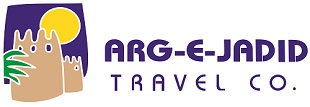
You will need to consider what to pack, to ensure you can use your personal electrical appliances safely while you are abroad. This normally includes the use of a travel adapter, which is a device that simply allows you to plug any US electrical appliance into a foreign
Electrical socket. It is important to note that it does not convert the voltage or frequency.
For Iran, there are two associated plug types: type C and type F.
Plug type C is the plug which has two round pins
Plug type F is the plug, which has two round pins with two earth clips on the side
Iran operates on a 230V supply voltage and 50Hz.

Voltage and frequency:
You can use your electric appliances in Iran, if the standard voltage in your country is in between 220 – 240 volts. Manufacturers take these small deviations into account. If the standard voltage in your country is in the range of 100-120 volts, you need a voltage converter in Iran. (In the US, electricity comes out of the wall socket at 110 volts, alternating at 60 cycles per second.)
If the frequency in Iran (50 Hz) differs from the one in your country, it is not advised to use your appliances. But if there is no voltage difference, you could (at your own risk) try to use the appliance for a short time. Be especially careful with moving, rotating and time related appliances like clocks, shavers and electric fan heaters.
To be sure, check the label on the appliance. Some appliances never need a converter. If the label states ‘INPUT: 100-240V, 50/60 Hz’ the appliance can be used in all countries in the world. Devices like this include most laptops and phones, most recently produced battery chargers, and many small, electrical gadgets, especially those designed for world travel.